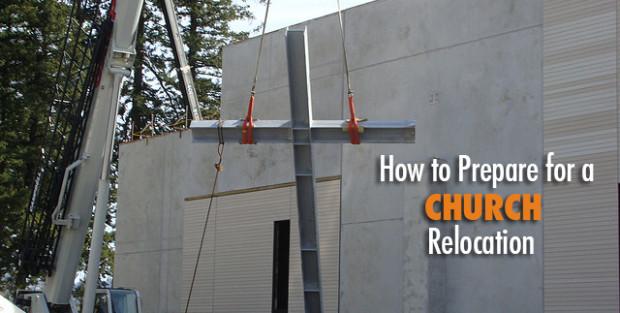Tips to Managing and Supervising Your Subcontractors

Did you bite off more than you could chew? You’re strained, and you don’t know what to do. There might come a time in your business when you just can’t get all the proposed work done on time. In order to make sure you never have to accept more responsibility than you can handle on a steel building site, you look into hiring a subcontractor. Subcontractors, or other independent contractors assist a general contractor on a job site in a specialty role, and takes a portion of the proposed contract.
Many general contractors like yourself use subcontractors even when you aren’t overextended; the use of subs is just a regular part of the job. You need them to keep your company profitable, and they need you for a steady source of income. Even though they aren’t officially your company employees, they still operate under the umbrella of your company. That means that you’ll still have to manage them effectively because the subcontractor generally signs the contract that incorporates the agreement between the GC and the client. That can get tricky. Here are a few tips on how to manage your subs, so both parties remain successful, and more importantly, your client stays happy.
Work it out
Do your research on subcontractors ahead of time. As a business owner, you MUST invest plenty of time in your search for a sub. Look at the sub’s past clients and past projects. Often times, you’ll make relationships with subs from working the same jobs. If you erect a steel building, and your client wants a lighting system, you might have a go-to electrician. If your client wants to build out a bathroom, you’ll need to negotiate with a plumber. You get the idea.
Make your instructions clear
 The client/contractor relationship can become very unclear when you introduce subcontractors into the equation. Before you start your next project, make all of your instructions clear. Remember, a steel building is the client’s dream, and you want to deliver. If a subcontractor doesn’t perform correctly, it might be because you didn’t adequately communicate with them. Put everything in writing. Clearly develop responsibilities, and don’t assume that the subcontractor knows the job, no matter how many times you’ve worked on the same team. Every steel building is different, and is tailored to each person’s unique specifications. Explain the steel building project in great detail, and stay organized! You’ll get the most out of your subcontractors by providing a prepared job site, and you’ll lay the foundation for a future relationship.
The client/contractor relationship can become very unclear when you introduce subcontractors into the equation. Before you start your next project, make all of your instructions clear. Remember, a steel building is the client’s dream, and you want to deliver. If a subcontractor doesn’t perform correctly, it might be because you didn’t adequately communicate with them. Put everything in writing. Clearly develop responsibilities, and don’t assume that the subcontractor knows the job, no matter how many times you’ve worked on the same team. Every steel building is different, and is tailored to each person’s unique specifications. Explain the steel building project in great detail, and stay organized! You’ll get the most out of your subcontractors by providing a prepared job site, and you’ll lay the foundation for a future relationship.
Define roles
Your client might not realize that the subcontractor is independent of you. All they see is a person working under your direction. In their eyes, you are responsible for them. If the subcontractor makes a mistake, it reflects poorly on your reputation. If the clients likes the subcontractor, they might seek more work from them in the future, and cut you out of the deal altogether. Set boundaries and roles. Only allow the subcontractors to address your client with you around. Basically, you want your subcontractor to treat you as the client. You’re the one issuing the orders and giving them payment.
Show me the money
Speaking of money, subcontractors and independent contractors don’t work for free. They are typically motivated by cold hard cash, and you’ll need to pay them properly and on time. This can be a very awkward situation, especially if your client doesn’t pay your fee on time. Structure a compensation plan that outlines all possibilities and contingencies. It’s generally a good idea to pay your subs a percentage of the contract at a predetermined time, like 30-60 days into the project, regardless if you’ve been paid by the client or not.
Know their schedule
 Your job might not be the only job a subcontractor has on their company or personal plate. If you have a deadline, make sure your subs can complete your job in the time allotted. Avoid problems by having a comprehensive knowledge of their schedule, so you can mitigate issues with your own timeline. If their schedule allows it, invite subs to weekly meetings and let them get a feel on your management style. You can talk about how you solve problems and conflicts, and it can be a great opportunity to brainstorm. When on the job site, you might be able to help your subs speed up their work, especially if they’re working on a steel building project. Because steel buildings can be erected in half the time compared to traditional construction methods, the projects could take less time than originally planned.
Your job might not be the only job a subcontractor has on their company or personal plate. If you have a deadline, make sure your subs can complete your job in the time allotted. Avoid problems by having a comprehensive knowledge of their schedule, so you can mitigate issues with your own timeline. If their schedule allows it, invite subs to weekly meetings and let them get a feel on your management style. You can talk about how you solve problems and conflicts, and it can be a great opportunity to brainstorm. When on the job site, you might be able to help your subs speed up their work, especially if they’re working on a steel building project. Because steel buildings can be erected in half the time compared to traditional construction methods, the projects could take less time than originally planned.
Pay attention
When you invite a subcontractor on a steel building job site for the first time, you’ll need to familiarize them with all aspects of the plan. Hopefully, they aren’t coming in cold. In your instruction phase, it’s always good to walk the job site before any work takes place. Now that they have arrived for work, fix them up with what they need to be successful. Since you’re the GC, you have to keep a watchful eye on all the subs as they perform their work on a steel building.
I recommend working with a subcontractor you have used before on a previous job. Relationships are key in the construction industry, and regular interaction creates trust. It could make it easier for you to obtain their services in the future.
Visit the Contractor Central blog for more weekly tips and advice!
Photo courtesy: PEO ACWA, Wayne National Forest, Savannah River Site
« Cold Hard Facts about Steel Building Shopping
One Sentence Church Leaders Don’t Want to Hear »
Popular Posts

Whether flying is a hobby or your business, you’ll need a place for your Cessna, Piper, or jet aircraft to call home. Nowadays, steel is the industry standard for airplane hangars across the country. In fact, a report from the U.S. Department of Defense says that “the superstructure of the hangar bay shall be a steel… …

It’s a big moment for your church. Yes, right now. Is attendance at an all time high, or are you hurting for worshipers? Is your community outreach lacking or impressive? What does your current building look like? Too big? Too small? Too old? Just not the right fit for your congregation? You could spend money… …

